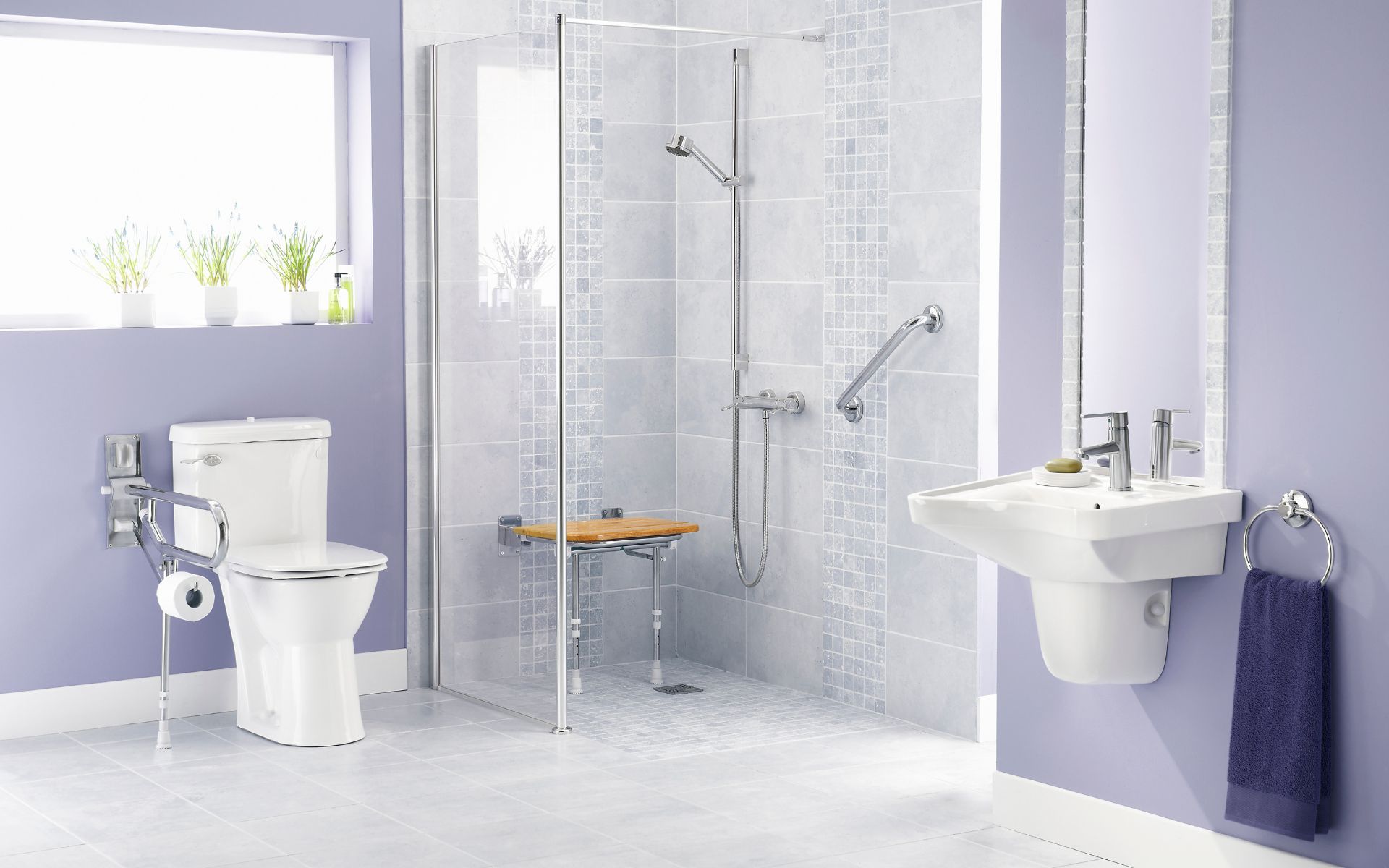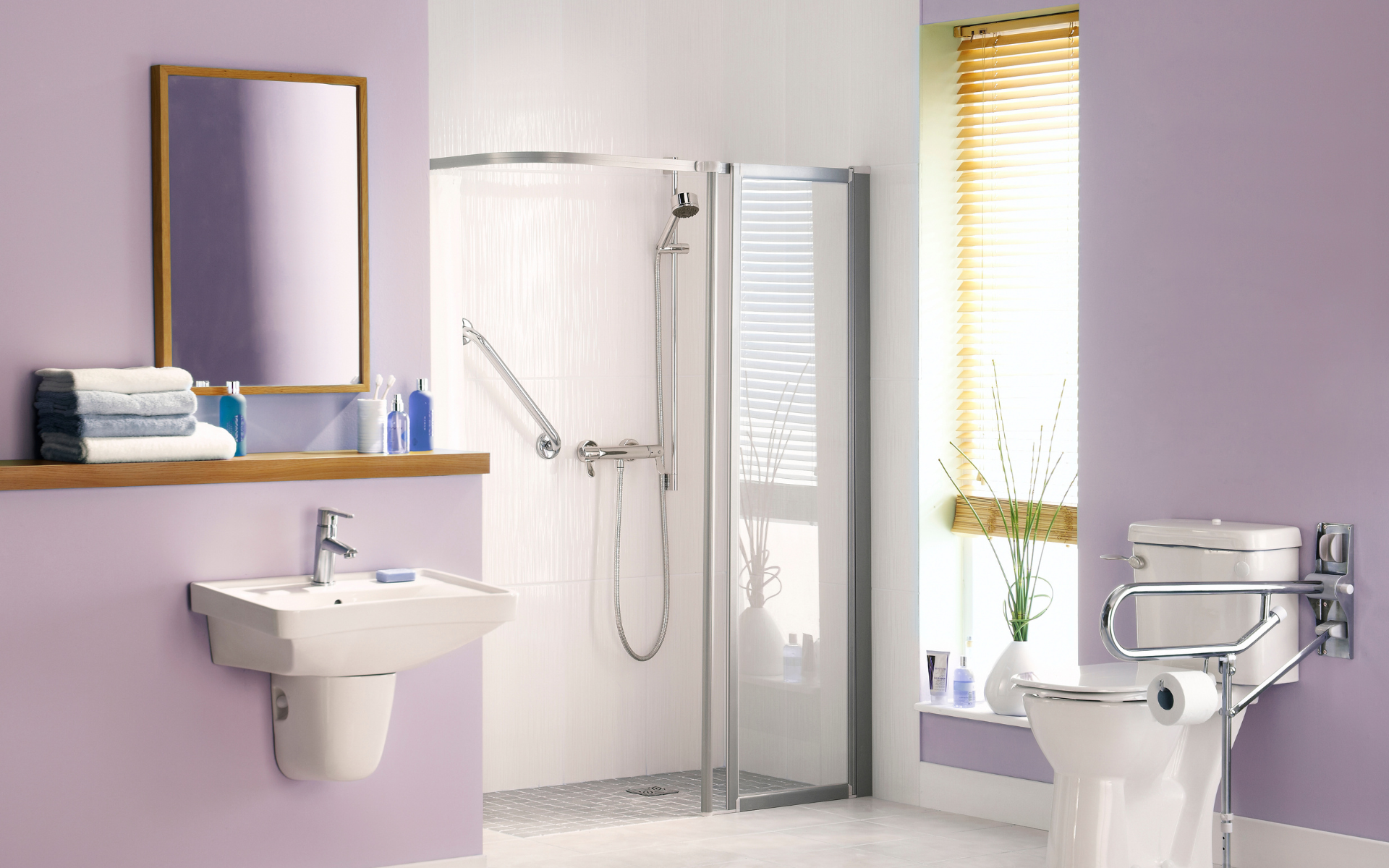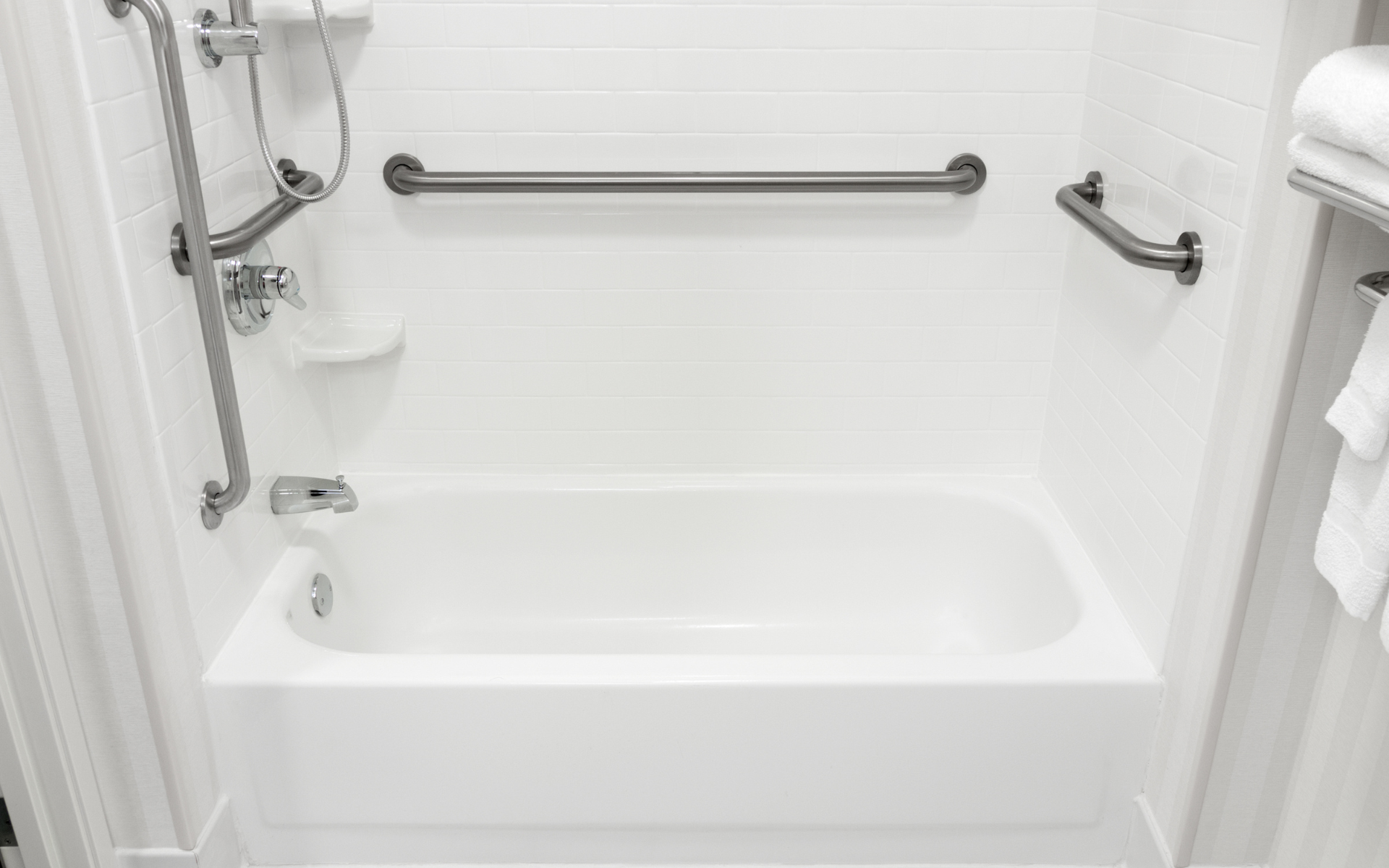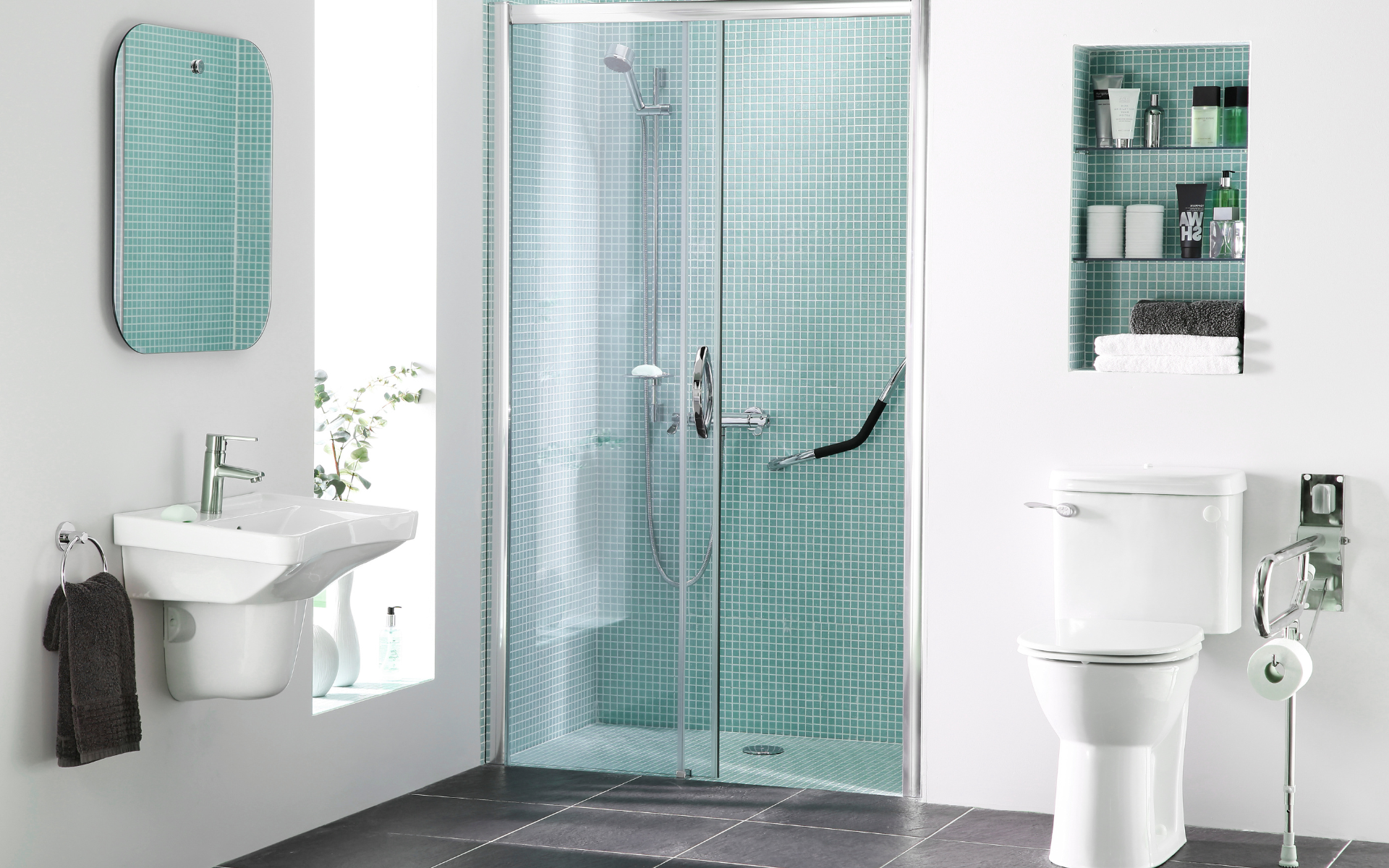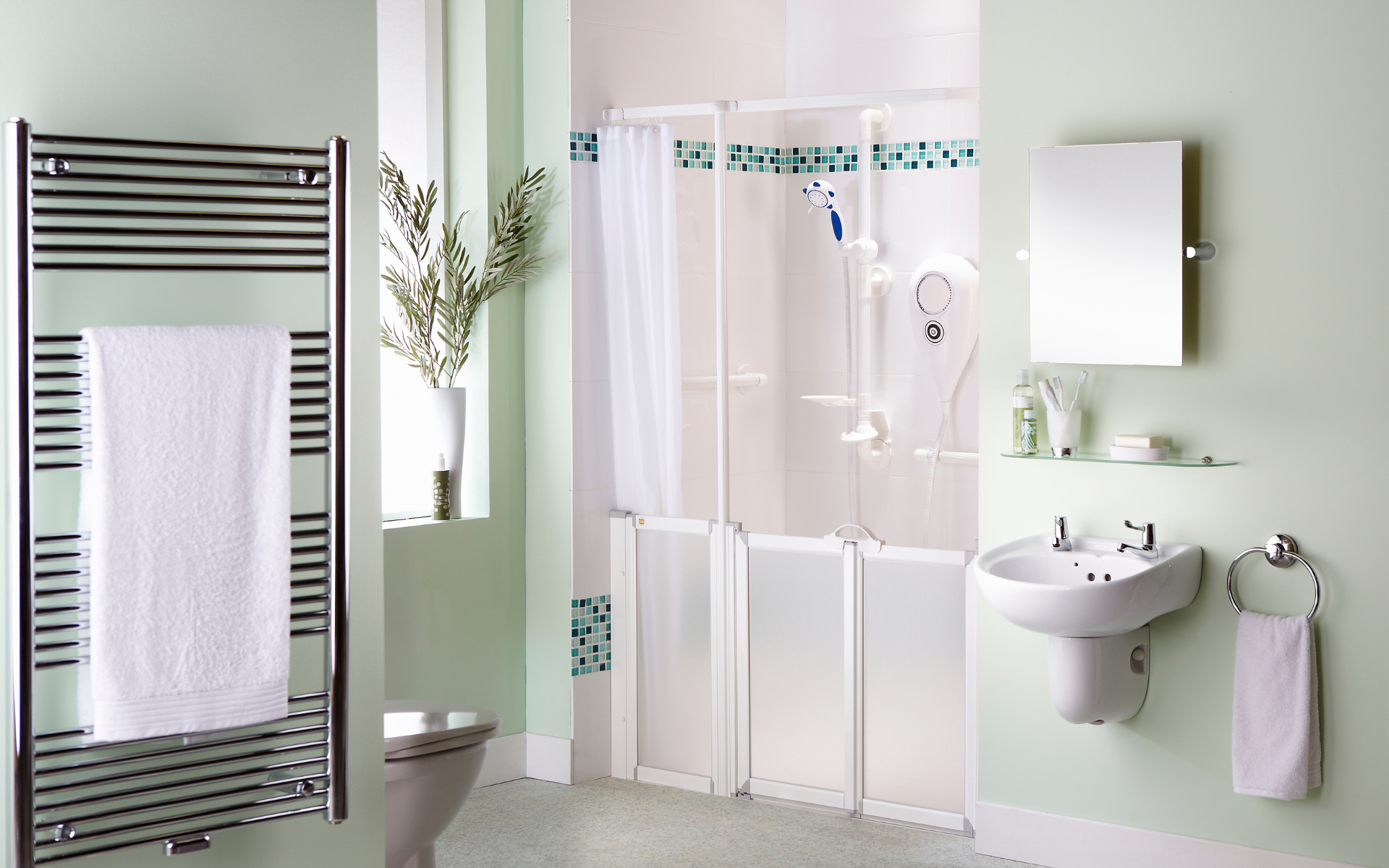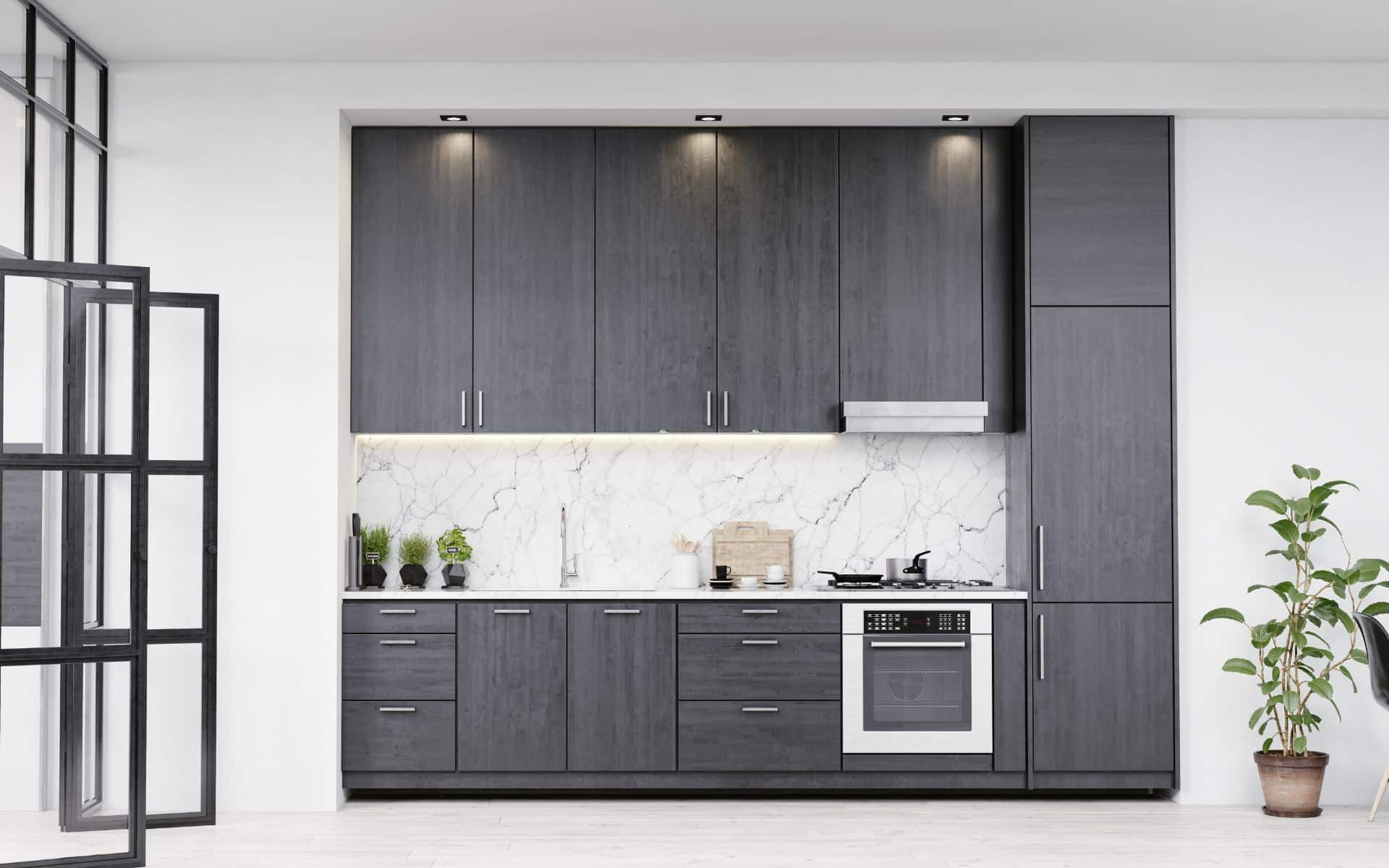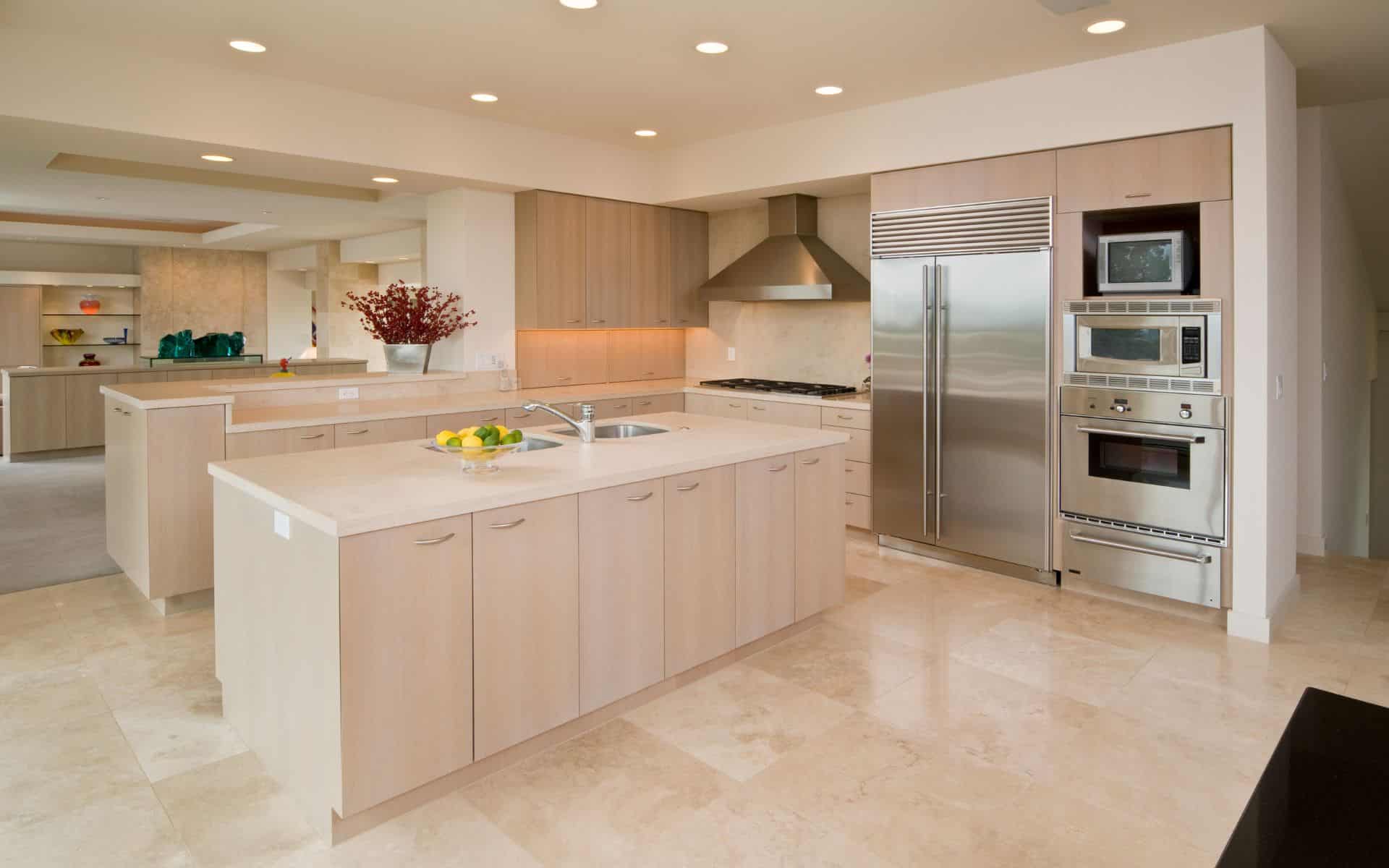Renovating the kitchen of a rental property can seem daunting, but it’s one of the best investments you can make. Not only does an updated kitchen and bath allow you to charge higher rent, but it also makes your property more appealing to potential tenants. Follow these tips for planning and executing kitchen renovations in your rental.
Remodeling or modifying your kitchen and bath can help make it more accessible, safe, and easy to use. Many simple changes can accommodate wheelchairs, walkers, and other mobility aids. Optimizing your bathroom not only reduces risk but also allows people with limited mobility, balance issues, or other disabilities to comfortably and securely use the facilities.
Why Remodel for Accessibility?
As we age or develop disabilities, bathrooms can become difficult or even dangerous to use. Small changes make a huge impact on safety and self-sufficiency. Some reasons you may want to modify your bathroom include:
Preventing Injuries
- Over 2.3 million bathroom injuries occur annually in the U.S.
- Falls are the most common cause, leading to broken bones, head injuries, or worse
- Burns from hot water or fires also often happen in bathrooms
Accommodating Mobility Issues
- Features like grab bars allow people with disabilities or balance problems to securely move around
- Walk-in tubs allow easy access for those who have difficulty stepping over standard tub walls
- Higher toilets and ergonomic handles ease sitting, standing, and maneuvering
Supporting Independent Living
- Simple aids allow people to use bathroom facilities safely on their own
- This maintains dignity and reduces reliance on others for help with personal care
The right modifications can make bathrooms safer, prevent injuries, and allow comfortable use no matter your age or ability.
Common Accessibility Remodel Options
There are many straightforward and affordable ways to do a bathroom remodel for accessibility and safety. These home modifications prevent accidents, reduce strains, and make personal hygiene easier.
Entry and Doors
The bathroom door and entrance represent a common obstacle for wheelchair, walker, cane, or unsteady gait navigation. However, several straightforward adjustments make maneuvering the bottleneck safer and simpler.
Automatic door openers
Installing push buttons, motion detecting, or remote-operated automatic door opening systems eliminates the struggles of manually opening heavy doors while managing mobility equipment. These generally cost $150-$500 depending on type and labor.
- Wall-mounted buttons allow easy access and prevent balance interference from existing hardware.
- Motion-activated systems automatically open when sensors detect movement within customizable distances.
- Handheld remotes give precision control without special wall modifications.
Automatic door openers increase independence in entering and exiting bathrooms hands-free.v
Lever Door Handles
Lever-style handles benefit individuals suffering from arthritis pain or limited grip strength over traditional twisting knobs. Light single-hand pressure triggers the latch, rather than tightly grasping and turning.
Luckily, most building codes now require lever handles compliant with ADA regulations in public spaces. Swap outdated home knobs for levers for under $20.
The home services review site Angie’s List suggests handy bathroom remodeling tips for safer showering.
Threshold Ramps
Small angled ramps spanning raised door thresholds maintain smooth roll-in or walk-in access over uneven bathroom entries. These removable $20-50 ramps prevent abrupt transitions that could catch wheelchair tires or throw unbalanced gaits off stride. Thin tapered designs sit nearly flush to avoid obstructions.
Widened Doorways
Expanding door widths to 32, 34, or 36 inches or more enables straight clearance for wheelchair navigation without bumps or scrapes. This often requires completely reframing rough openings. Wider doors necessitate 8-10 extra inches of floorplan space and remodeling effort.
Showers and Bathtubs
Showers and bathtubs pose falling risks given slick surfaces. However, appropriately placed grab bars, textured floors, shower benches, curbless access, and walk-in tubs minimize these bathroom hazards.
Grab Bars
Installing stainless steel or composite grab bars in multiple orientations provides stability easing standing, sitting, and reaching. Use angled, horizontal, and vertical orientations for flexible positioning. Grab bars rated to handle 250-500 lbs cost approximately $50-100 each including professional installation.
Place bars across natural movement flow based on bathtub/shower layouts. Generally focus placements around toilet areas, seating areas, entrance access points, and between stabilize points.
A detailed guide from the National Association of the Remodeling Industry (NARI) provides comprehensive advice on making bathrooms safer along with other home modifications for improved accessibility.
Textured Flooring
Applying textured mats or grip tape striping on floors boosts traction and reduces slips, especially when wet. Hundreds of non-slip bathroom floor mat styles exist, or adhesive slip-resistant tape adds visibility. Use contrast colors to distinguish floor plane changes.
Mats run $30-60, and high grip tape costs $20-40 per application.
Shower Benches
Built-in shower bench seating enables safe resting cleaning hard to hard-to-reach areas. Fold-up options allow flexible room use when not needed. Water-resistant teak, polymer, or composite benches hold up in wet conditions.
Curbless or Low Profile Access
Minimizing or eliminating the raised shower curb lip eases roll-in wheelchair entry without bumps or level changes. This curbless transition aligns the bathroom floor plane with the shower floor plane. Some options feature a low 2-inch rib allowing partial obstruction.
Walk-in Tubs
Complete bathtub models with sealable outward swinging doors feature integrated seating and ease of accessibility between outside floor spaces and inner tub areas. However, walk-in tubs represent large investments of $2,500-$5,000 and extensive remodeling.
Toilets and Sinks
Everyday tasks like washing hands and using the toilet become less taxing with specialized bathroom fixtures and layouts.
- Raised toilets: Higher toilets make sitting and standing easier for those with knee arthritis or other joint pains.
- Grab bars: Vertical or angled grab bars provide stability on and off toilets.
- Easy access sinks: Open clear space underneath sinks accommodates wheelchairs for easier use.
- Lever faucets: Faucets with single-lever handles enable easier water flow adjustment than separate hot/cold handles.
Lighting, Storage, and Electronics
Don’t forget about the convenience and safety provided by upgraded lighting, easy-access storage, and hands-free electronics.
- Motion sensor lighting: Lights that activate automatically when detecting movement increase visibility for safe entering and exiting rooms.
- Voice-controlled devices: Controlling lighting, fans, and electronics via voice commands allows hands-free adjustments.
- Upper storage: High-wall cabinets above toilets or sinks provide specialized storage without impacting wheelchair access.
- Lower electrical outlets: Electrical outlets placed higher up walls keep vulnerable wiring safely out of water range.
Executing an Accessibility Remodel Project
If you’re ready to remodel your bathroom for accessibility and safety, here is an overview of how to get started:
Assess Unique Needs
Take stock of your or your loved one’s current mobility levels and how that impacts bathroom usage.
- What causes the most difficulty or safety risks?
- What features would offer the most help for your situation?
These insights inform which upgrades can provide the highest benefits.
Research Design Options
Use the suggestions above as a starting point for generating remodeling ideas. Look at photos, videos, home modification guides, and decor sites for inspiration. Talk to occupational therapists or accessibility consultants for personalized advice.
Create a Prioritized Plan
Turn goals into an action plan based on budget, needs, and home constraints. Focus first on safety, then accessibility accommodations, and then modernization for convenience. Spread larger renovations into multi-phase projects over time if needed.
Interview Contractors
Explain your accessibility goals and ideas to bathroom remodeling contractors. Ask about their experience with senior and ADA bathrooms to find one well-versed in accommodation regulations and customized design.
Choosing Fixtures for Special Needs
When selecting fixtures like sinks, toilets, and bathtubs, keep accessibility and safety needs in mind. Features tailored for limited mobility include:
Toilets
- Elongated bowl shape and higher seat ease sitting and standing
- Built-in grab bars provide stability
- Pressure-assisted flushing generates extra force
- Higher Tank creates an angled grab bar space behind
Sinks
- Wall-hung sinks allow wheelchair access underneath
- Automated faucets turn water on/off hands-free
- Adjustable mirror heights suit various users
- Insulated piping reduces hot water burns
Bathtubs and Showers
- Sliding bath doors minimize doorway barriers
- Removable shower heads enable adjustability
- Hand-held shower hoses simplify reaching all areas
- Contrasting color faucets help those with low vision
Choosing models with an ADA-compliant seal ensures accessible designs.
Improving Low-Vision Bathroom Use
Low or no vision also increases bathroom accident risks. Upgrades like high-contrast colors, ample lighting, and sensory notifications enhance safety.
Lighting
- Bright general overhead lighting eliminates dark spots
- Task lighting at sinks and mirrors helps detail work
- Undercabinet LEDs provide even lighting
- Nightlights enable middle-of-night visibility
Visual Contrast
- Dark floor tiles with light grout lines distinguish spaces
- Bold-colored walls allow easier room distinction
- Contrast toilet seat against floor assists orientation
Tactile Features
- Textured mats signal transitions like shower/floor edges
- Braille or raised number signage marks rooms
- Distinct faucet shapes assign hot vs cold handles
Managing Bathroom Care Costs
While critical for safety, bathroom remodeling can get expensive. Here are tips to reduce bathroom remodeling costs:
- Stick to the necessities at first, hold off on full modernization
- Complete upgrades across multiple small projects over time
- Take advantage of tax credits, insurance reimbursements, VA benefits
- Focus DIY efforts on simpler tasks like grab bars or lighting
- Compare quotes across bathroom contractors to find the best rate
Prioritizing adaptations that reduce injury risk and support physical needs before convenience upgrades save money without sacrificing safety.
Maintaining Accessibility Long-Term
As functionality needs to evolve, reassess your bathroom’s accessibility fittingly.
- Conduct annual reviews of bathroom safety as mobility changes
- Install reinforcements like blocking behind walls for future grab bar additions
- Convert unused spaces like linen closets to future roll-in showers if needed
- Plan 5-10 years for children’s independence or adults’ aging considerations
Building future flexibility into the bathroom’s framework makes modifications much simpler down the road.
Ultimately
While remodeling introduces significant temporary disruption, the long-term benefits for your daily life make the efforts worthwhile. An optimized bathrobe tailored to your unique mobility and safety needs allows you or your loved ones to comfortably, confidently, and securely conduct personal care.
Small touches like a grip bar here, a textured mat there, extra lighting overhead, or open clearances under new modern sinks radically transform formerly challenging spaces. Your reimagined bathroom becomes a sanctuary catering to all visitors’ needs through conscientious universal design.
Beyond just mitigating safety risks from slips, falls, or strains, an accessible bathroom empowers freedom. Freedom to shower independently relying on well-placed grab bars. Freedom to access sinks from a seat with knees underneath. Freedom to enter shower curbs without toppling or loss of balance.
Use this guide to start assessing your bathroom’s opportunities. Evaluate which adaptations suit your or your family’s present or future accessibility situation. Then begin building a bathroom environment forgiving flaws and limitations, instead of exacerbating them.
While budget, effort, and work disrupt cherished routines for a period, soon you’ll reclaim sacred spaces outfitted for security and simplicity. Ultimately, your new bathroom uplifts the spirit by catering to ALL who hope to refresh, renew, and recharge independently within its walls.

